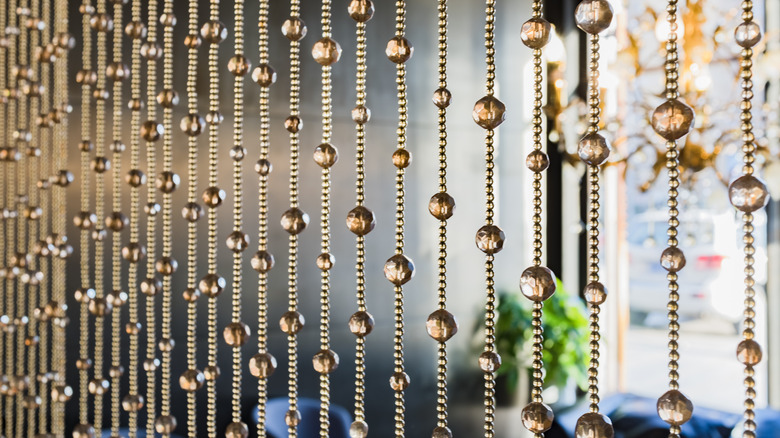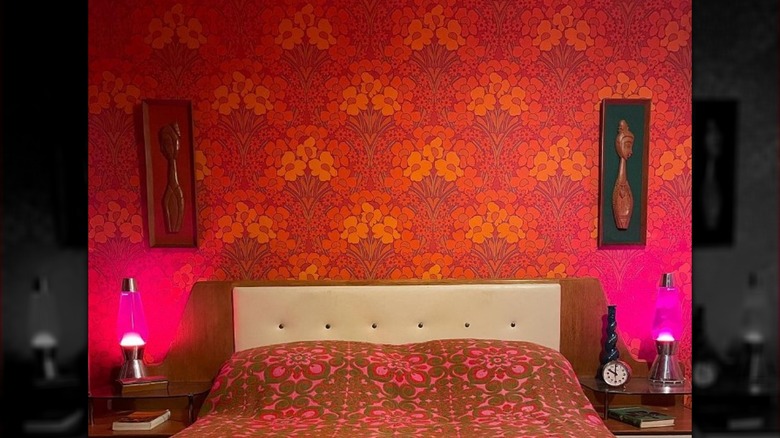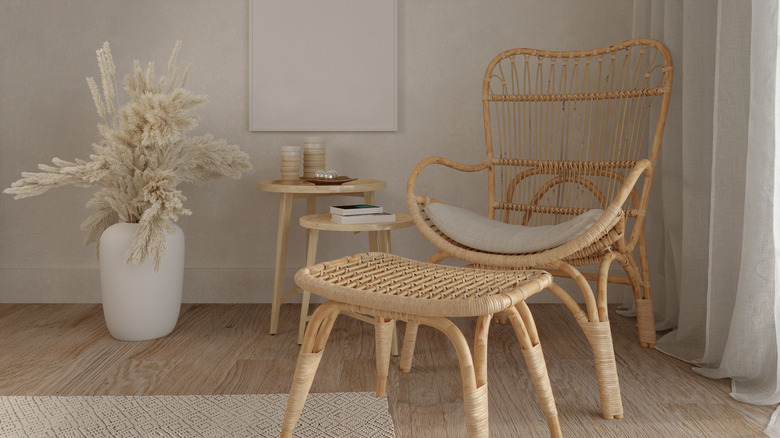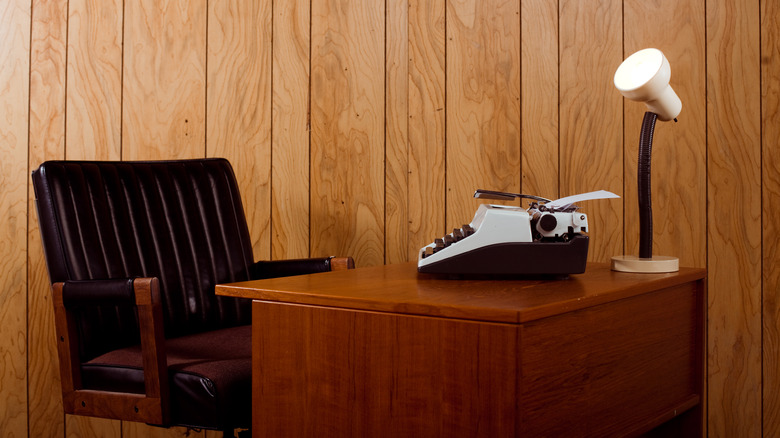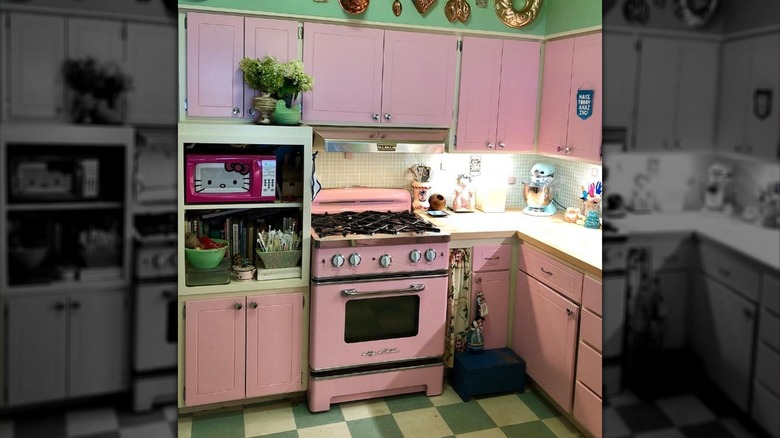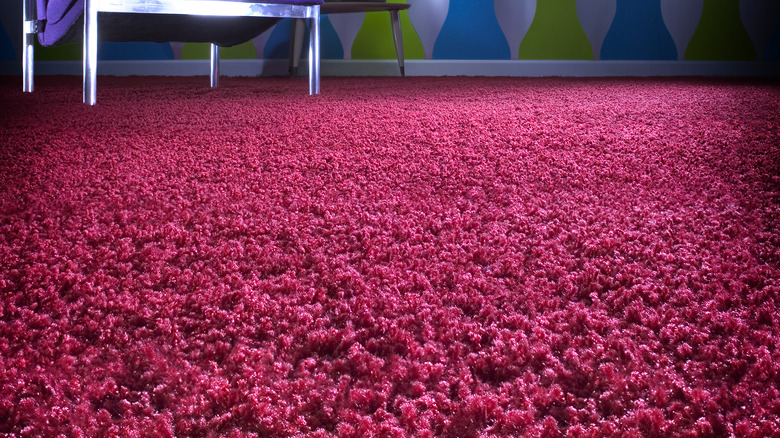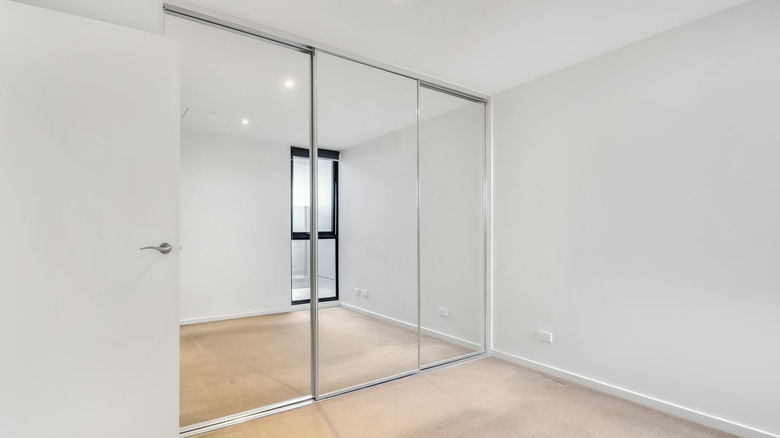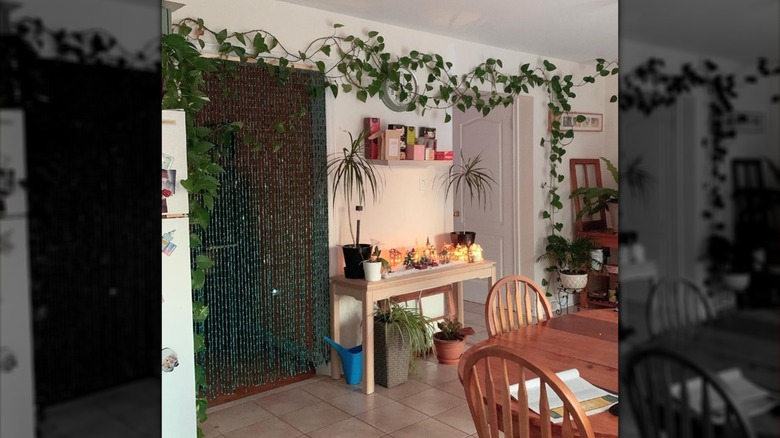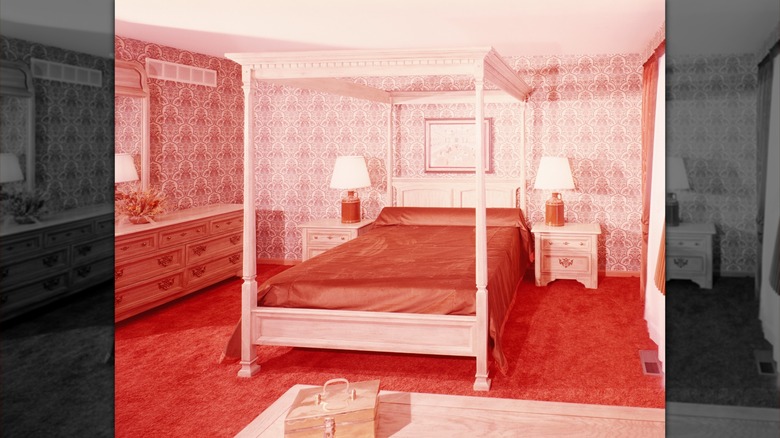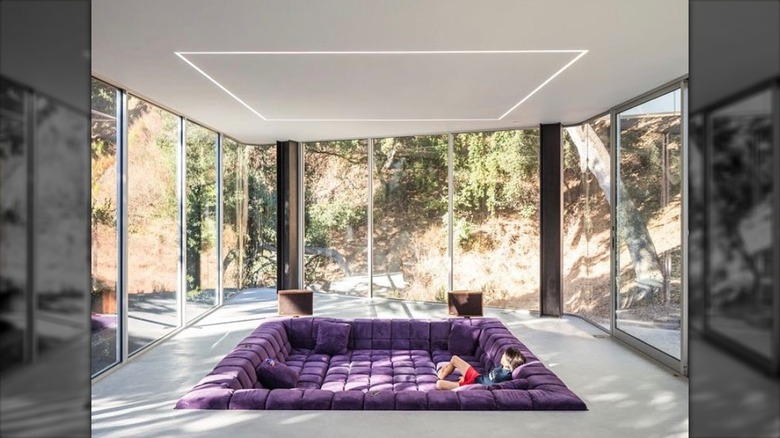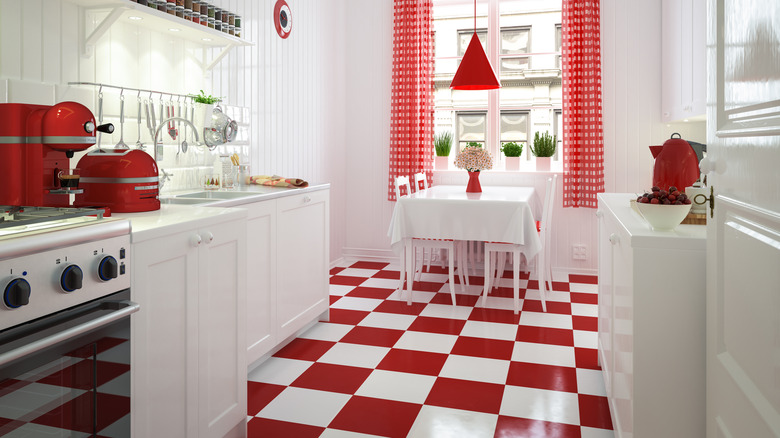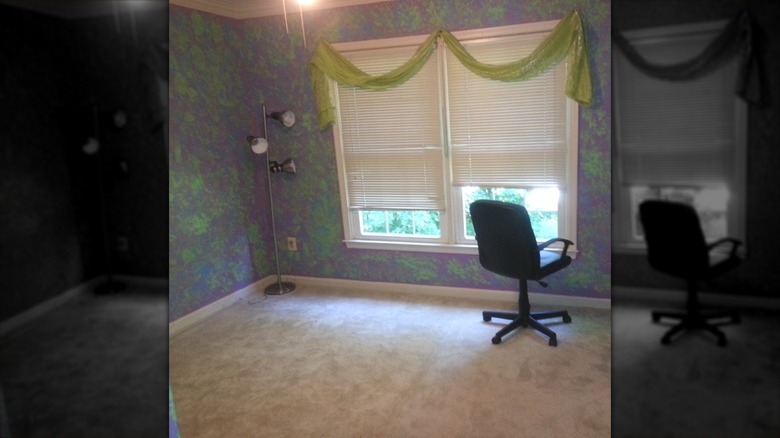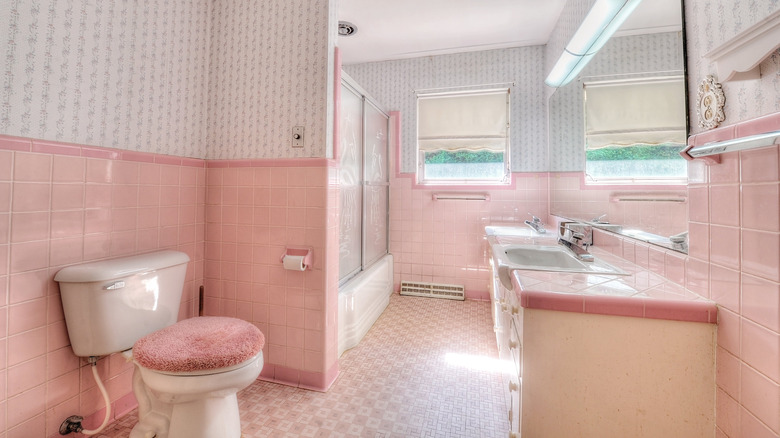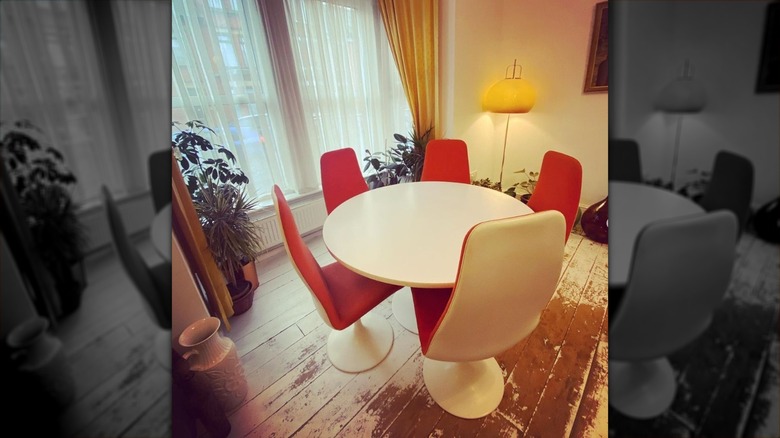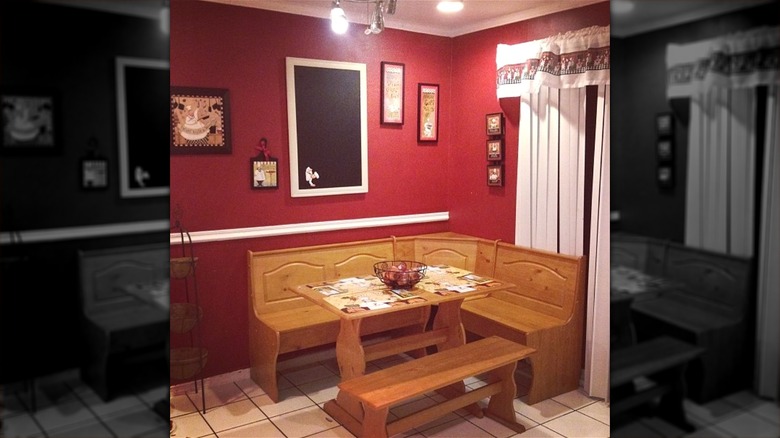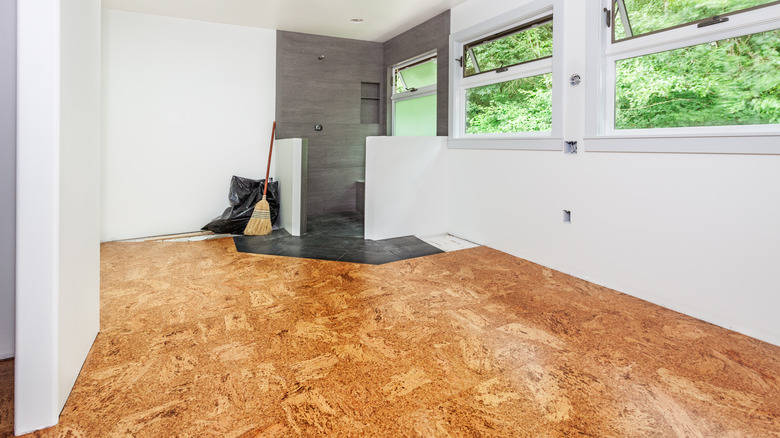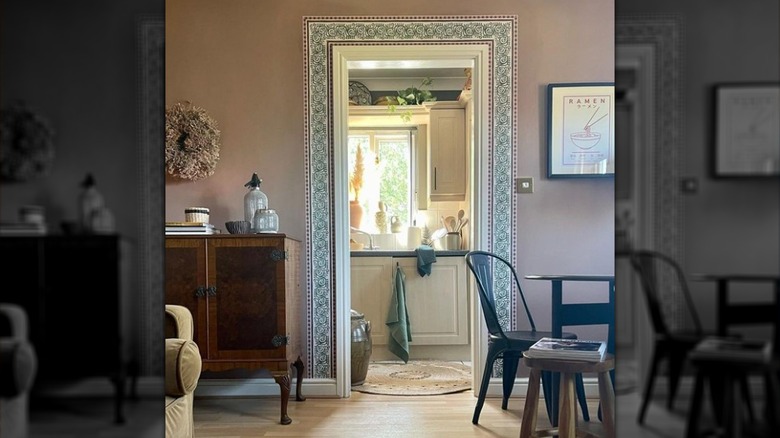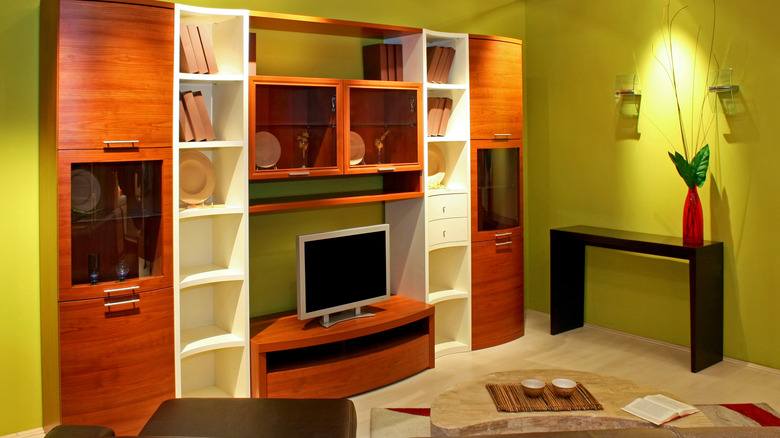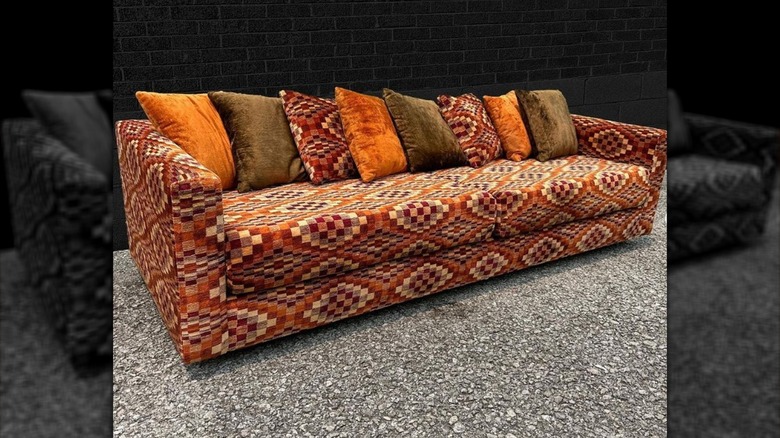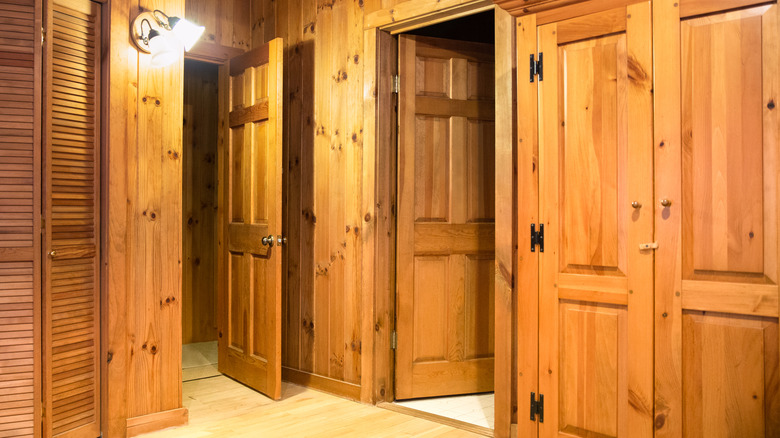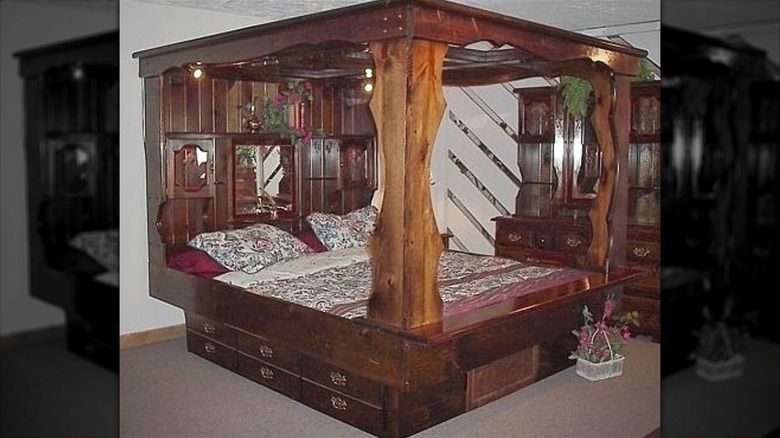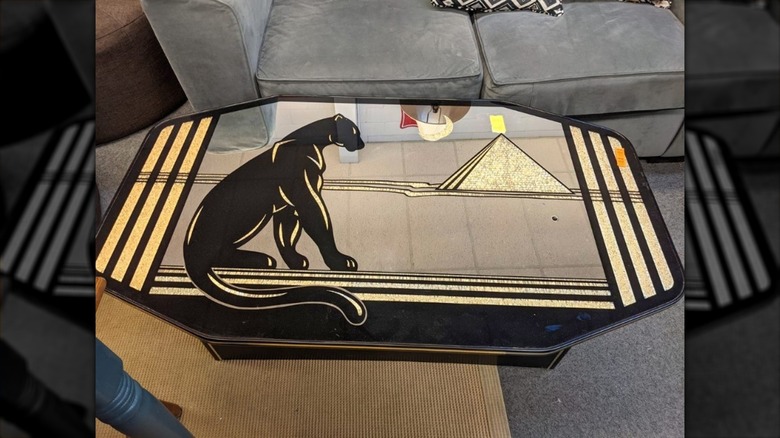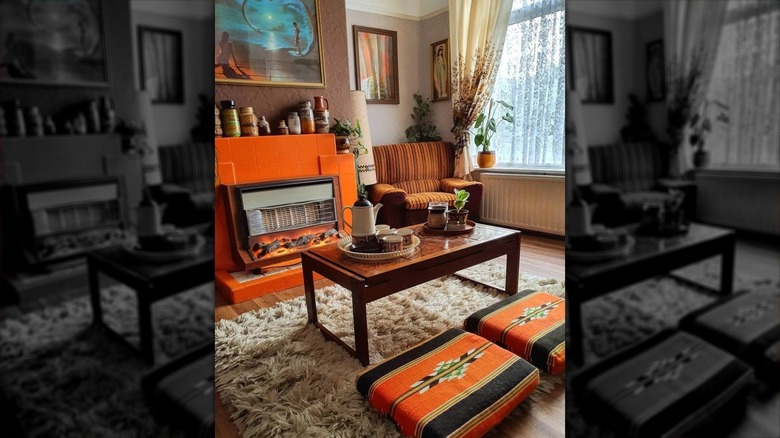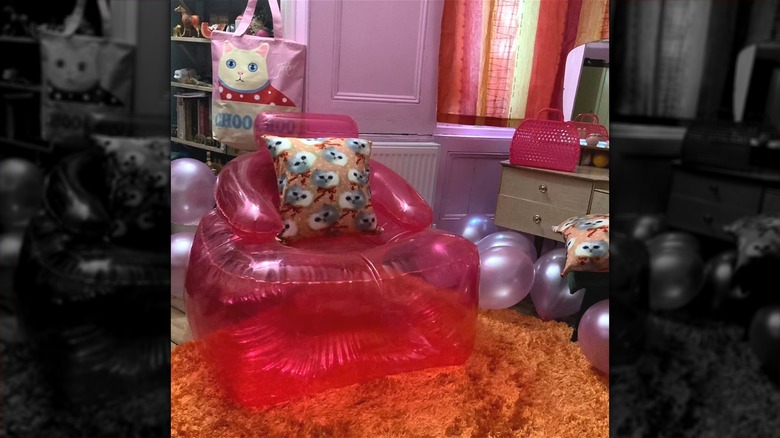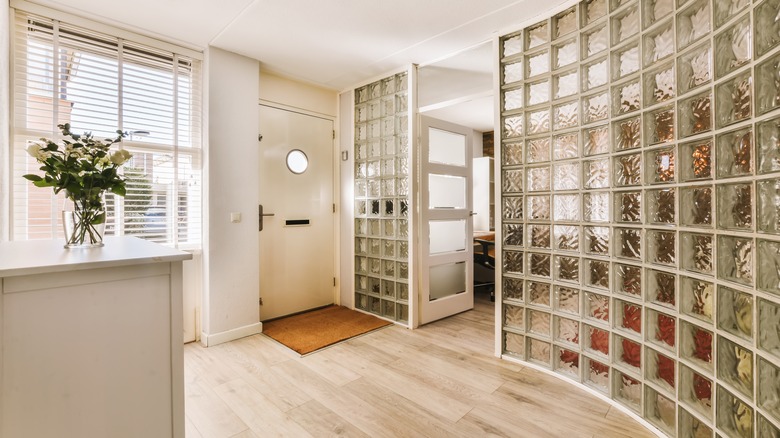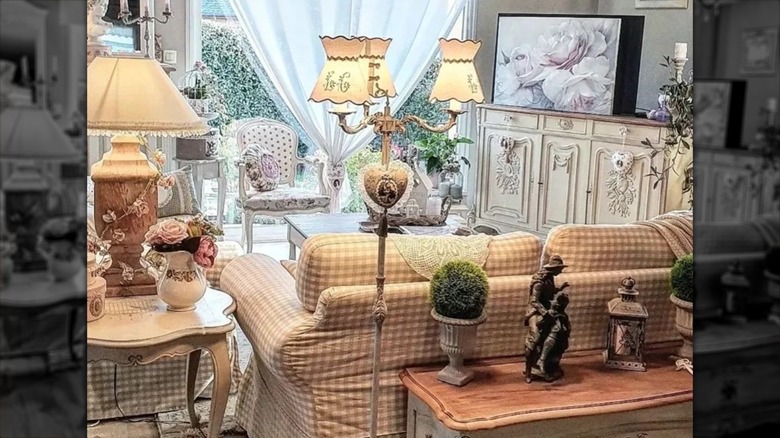Retro Cool Or Outdated Old School: Can These Vintage Trends Work In Modern Places?
If you ask us, there's no better way to spend a lazy Saturday than sifting through quirky secondhand items for sale — and it seems the majority of Americans would agree. According to a 2022 survey by Emarsys, about 60% of Americans regularly shop for vintage items, confirming that "old" is in. As you're browsing an antique store, thrift shop, garage sale, salvage yard, or even online retailers, you may come across some fascinating retro item that makes you feel nostalgic, or even inspires you to learn more about vintage interior design. However, before you let that 1970s avocado shag rug win over your heart and your living room, you may want to know — can every old trend look good in your modern home?
Take a deep breath before you click that "buy now" button. As it turns out, not every vintage trend vibes well with a contemporary house. Yes, personal taste is always more important than anyone else's opinions on your home, but there's a good reason why some of these old-school design trends are better left in the past. Here are the most iconic pieces we're loving to see incorporated into modern homes– and some that we'd rather admire from the safe distance of throwback memes.
1. Bold wallpaper: Retro cool
Starting off on a bright note, wallpapers were popular throughout the 20th century, but took on an especially bright and bold look during the 1960s and 1970s. Floral prints, geometric shapes, and curvy lines came in eye-catching colors like yellow, orange, fuschia, teal, and green. Here's the good news: this vintage trend can absolutely work in a modern space, especially if you're keen on maximalism and other midcentury design details! Just make sure the design matches whatever you have going on in the rest of the room.
2. Rattan furniture: Retro cool
Rattan furniture's popularity peaked around the 1970s, when you could find everything from rattan and glass tables to chairs, bookshelves, and sofa sets. Sofas and chairs were usually fitted with plush cushions in fun colorways that changed as the years went on. The 190s saw rattan furniture cushions taking on more tropical prints and dusty pastel tones. Rattan can work brilliantly in modern homes today, especially those that strive for an organic, earthy feel — just swap out the upholstery for something more neutral.
3. Wood paneling: Retro cool
As a true icon of the 1970s, wood paneling can still be found in many older homes today. Although it isn't utilized very often in new builds these days, wood paneling can actually be done quite tastefully in a modern home, especially if it's treated in a similar fashion to modern-day shiplap. If you're not super excited by the woodgrain look, you can try out the best way to paint wood paneling for a more colorful or neutral appearance.
4. Monochrome kitchens: Retro cool
Colors like mint, pink, and butter yellow were especially popular for kitchens during the midcentury, and it was key for all of your appliances and cabinets to match — or at least play into a similar color palette. While the result is a very old-fashioned look, this vintage home trend definitely has a place in modern homes today. As trends move away from all-white interiors, a colorful monochrome kitchen can be a great way to make your home look more unique and cozier. If you happen to own or find a beautiful pastel oven or refrigerator, definitely consider painting your cabinets to match.
5. Shag carpets: Outdated old school
Plenty of folks have fond childhood memories of playing on the family homes' thick shag carpets, which often stretched wall-to-wall and even crept into the bathroom. While some people may still love curling their toes into shag, this trend is better left in the past. Carpet in general has fallen out of favor for modern homes because it dirties easily, collects stains and odors, and can easily look outdated and nasty — especially if it's over 50 years old. A small vintage shag rug may be permissible if you can give it a thorough cleaning first.
6. Mirrored wardobes: Retro cool
Mirrors were a popular trend in 1980s interior design, from ornate wall mirrors to mirrored coffee tables and even mirrored ceilings. Closets and standalone wardrobes often featured floor-to-ceiling mirrors, which made rooms feel larger and undoubtedly made it easier to get dressed in the morning. This old-school trend can make a strong comeback in modern homes, as mirrors have already become a huge trend in recent years. Wall-to-wall mirrors may be a bit overwhelming, but a few artfully placed vintage mirrored wardrobe mirrors can look tasteful and bright in any space.
7. Beaded curtains: Retro cool
Beaded curtains in the doorway reflected the fluid and open-minded attitudes of the 1960s and 2970s, breaking down barriers between people and redefining how we define separate spaces. Plus, they were fun to walk through. Beaded curtains can still look amazing in a modern home today, especially for doorways that aren't used too often, like a pantry or home office space. To make this fun trend more practical, though, it's recommended to attach a hook to the door frame so you can pull the curtain out of the way when needed (for example, if you're moving furniture in or out of the space).
8. Canopy beds: Retro cool
Canopy beds are a classic design that has been around for centuries, but weren't so trendy throughout most of the 20th century. In the 1970s, this sheltered bed style saw a resurgence in popularity, which slowly declined and then shot up again in the 1990s for a bit. To make a canopy bed work in your modern bedroom, it's best to leave the frame bare or opt for sheer, lightweight curtains tucked back at the posts. Anything too heavy can make the room feel smaller — not to mention, collect dust.
9. Conversation pits: Retro cool
As impractical and quirky as it may seem, this sunken living room feature was a pinnacle of midcentury interior design. "Historically, the conversation pit was about connecting with people, having personal conversations, and creating a more intimate environment to get to know someone or spend time together," explains design historian Alessandra Wood on Something Curated).
Is it a throwback? Certainly. Should you keep a conversation pit if you have one? Absolutely! This is a piece of design history that is quite rare and unique, as long as you aren't worried about the fall risk from toddlers or older family members.
10. Checkerboard floors: Retro cool
Checkerboard tile patterns have existed for thousands of years, but most of us picture them in a charming 1950s kitchen, especially in bold colors like red, black, and white. Is checkerboard flooring coming back in style anytime soon? Yes! In fact, checkerboard has already been trending in recent years, seen in squiggly variations, pastel tones, tile floors and even wall murals. If you're going to embrace this bold vintage flooring trend, you may want to opt for a softer, more adaptable color scheme like pink, sage green, blue, or natural wood tones.
11. Sponge painted walls: Outdated old school
Sponge-painted walls had a moment in the late 80s and 90s, giving boring walls some interesting variation in color and texture with an easy and cheap DIY painting technique. Some people may still like the faded, multi-tone look that sponge painting provides, but honestly, this trend shouldn't make a big comeback anytime soon, as it can easily make a space feel messy and sloppy. If you're craving some texture or that soft, sweeping look on your walls, limewash paint will do a better job at standing the test of time.
12. Pastel tiles: Retro cool
Popular throughout much of the 20th century, pastel porcelain tiles can still be found in many vintage bathrooms and kitchen backsplashes. While it can be hard to cope with a tile color that's ... well, not many people's favorite, this vintage trend gives off charming dollhouse vibes that can certainly work in a modern maximalist home. Instead of fighting with your vintage tiles, work with them by adding a fun modern wallpaper and incorporating a bold color scheme into the room. One thing's for sure, you'll definitely earn compliments from guests about your quirky bathroom.
13. Space age seating: Retro cool
Amid excitement about the moon landing and TV series like "The Jetsons," homeowners of the 1950s and 1960s were seemingly obsessed with the concept of futuristic furniture such as bean bag chairs, pod chairs, and lounges. Anything with curves, arcing lines, moldable shapes and a low-lying frame was popular during this "space age" era, and it's no wonder such artfully crafted furniture is still sought after today. This vintage trend can work beautifully in a modern home, but you may want to balance your swiveling, rocking egg chairs with a few regular, stable seating options as well.
14. Themed kitchens: Outdated old school
It seems like everyone in the 90s and early 2000s had a strong kitchen theme, from juicy red apples to country roosters, plump pizza chefs, and classic French lemons. A person's kitchen theme didn't just consist of a few favorite pieces; everything in the kitchen had to match. As far as retro trends go, this one probably shouldn't be brought back in full swing any time soon. While a nice color scheme and a few cute motifs can make a kitchen feel homey, having everything fit one very niche aesthetic can look and feel disingenuous. Instead, look for pieces that speak to your personal style, then incorporate a few of your favorite kitchen collectibles.
15. Cork flooring: Outdated old school
Relative to the history of humankind, cork flooring is a fairly new building material, introduced around the early 1900s. This uncommon flooring material saw increased demand in the 1930s, then again around the 1970s, but never really caught on in the new millennia. Is it finally time for this eco-friendly flooring to have its big moment? Some folks aren't so on-board. As unique as it is, cork can have some serious durability issues compared to hardwood flooring, so it's impractical for many modern households. The cork can also look a bit like particle board or sub-flooring, making the space feel unfinished. Opt for classic hardwood or even wood laminate instead.
16. Wallpaper border trims: Retro cool
Wallpaper borders were once an easy way to jazz up an otherwise ordinary painted wall, but they fell out of fashion as the 1990s gave way to the new millennia. These strips of wallpaper were usually pasted around the top edge of the walls, but they're more versatile than you might thing. Smaller borders can even be used to "pop" out certain features in the room, such as the fireplace, windows, or door frames. With ornateness and detail being all the rage lately, wallpaper borders can certainly find a place in modern homes again.
17. Large entertainment centers: Outdated old school
Real wood furniture will always be classic, and it has value in a world that's increasingly filled with mass-produced fast-furniture options. However, clunky entertainment centers tend to make the space feel heavy and impractical, and they put the TV the focal point of the room — a cardinal sin of modern interior design. If you're reluctant to leave this furniture behind, the best way to incorporate it into a modern home is to style it like a bookshelf. Otherwise, think about reducing your TV console's footprint to something more sleek, like a vintage buffet cabinet.
18. Bold patterned couches: Retro cool
Couches of the 1970s are often affectionately dubbed "grandma" couches today. These sofas usually featured muted sunset tones or earth tones and slightly scratchy woven fabric — and more than likely, some smoky odors embedded into the fibers. Vintage couches can be styled in a modern home, but make sure it blends well with the rest of your décor. You'll need pieces to help meld the hardcore vintage vibes with your more modern pieces. If you're shopping secondhand, be sure to check your couch for bedbugs, too.
19. Knotty pine: Retro cool
Similar to wood paneling, knotty pine was a popular furniture and building material in the 1940s and 1950s, especially in log cabins. Some people have an unfounded hatred for knotty pine today, but this retro trend can totally work in a modern home, especially those that strive for a cabin-like or organic, natural feel. If full-on knotty pine paneled walls feel a little overwhelming for your space, a subtle pine trim around doorways and windows can give a nod to the timeless trend. Either way, knotty pine is as cool as it ever was, and if you like it, you should embrace it.
20. Waterbeds: Outdated old school
The late 1980s saw peak popularity for waterbeds, once considered scandalous before they became popular in suburban bedrooms everywhere. Still, while the waterbed's fame brought it into many households in the 1990s, its heyday was somewhat short-lived — as owners grew frustrated with nuisances like squeaks, sloshes, leaks, and algae growth. While the waterbed was certainly an iconic vintage trend, it's better left in the past, as modern bedrooms prioritize good sleep hygiene — and good hygiene in general. There are plenty of posture-supportive modern beds today that provide a better alternative to waterbeds, and don't require owners to drag their 300 ft. garden hose from the back yard to the second story to refill.
21. Brass details: Retro cool
In the 1980s, polished brass details were everywhere, from the trim on mirrors, to walk-in showers, faucets, tables, lamps, décor and more. Specifically, brass and onyx black or brass and glass were popular combinations in furniture. Some people still aren't ready to bring brass back, but this is one vintage trend that shines like gold (literally). Brass has a very distinct and vintage appeal. Plainly put, it looks "cool" without overwhelming a room, making it one of the easiest vintage trends to incorporate into a modern home.
22. Earth tone takeover: Retro cool
Aligning with the overall "get-back-to-nature" vibe of the decade, the 1970s were all about earth tones like mustard yellow, avocado green, rust orange, and chocolate brown. The wonderful thing about earth tones is that they all play very nicely together, making it easy to incorporate a 1970s harvest gold couch into any modern home, so long as it flows with the color palette. If you're intrigued by earth tones, don't be afraid to embrace them, but balance out the bold, solid colors with natural textures like wood, wicker, linen, and clay.
23. Inflatable furniture: Outdated old school
Inflatable furniture was a design phenomenon of the 1990s and early 2000s. Every "cool" teen had at least one inflatable chair in their bedroom, but eventually this trend bubble had to burst. Today, inflatable furniture might be comical, but it's just not very practical in a modern home. After all, would you sleep on an air mattress every night just because its trendy? If you happen to have a few of these nostalgic pieces laying around, it may be worth keeping them for guest seating. Otherwise, deflate and tuck away. Retro space age seating and acrylic "bubble-core" furniture can provide a similar, more modern, and more grown-up look.
24. Glass blocks: Retro cool
Another iconic detail of 1980s design, glass blocks were once considered a token sign of outdated homes, but it seems they've turned cool once more overnight. "Glass blocks are synonymous with Miami Art Deco. They are certainly making a comeback," says real estate agent David Pulley to Apartment Therapy. With that in mind, this vintage design trend could make for an exciting display in modern homes. Offering ample natural light, good insulation, and visual interest, glass blocks can be a brilliant solution for bathroom windows, interior walls, and street-facing windows that need a little extra privacy.
25. Shabby chic: Retro cool
Believe it or not, this delicate décor style is already phasing into "retro" territory. That is, it's at least 20 years old. The concept of shabby chic really started around the 1970s, but found traction in the late 1990s and early-to-mid 2000s. Shabby chic is retro cool because it is unabashedly cluttered and iconically feminine. When it comes to styling this retro trend in modern homes, it's important to do so in moderation to avoid looking too "shabby" and not enough "chic." Romantic ruffles and lace, found details, and kitschy décor are all safe to explore, just avoid anything too barn-like or obviously fake-weathered.
